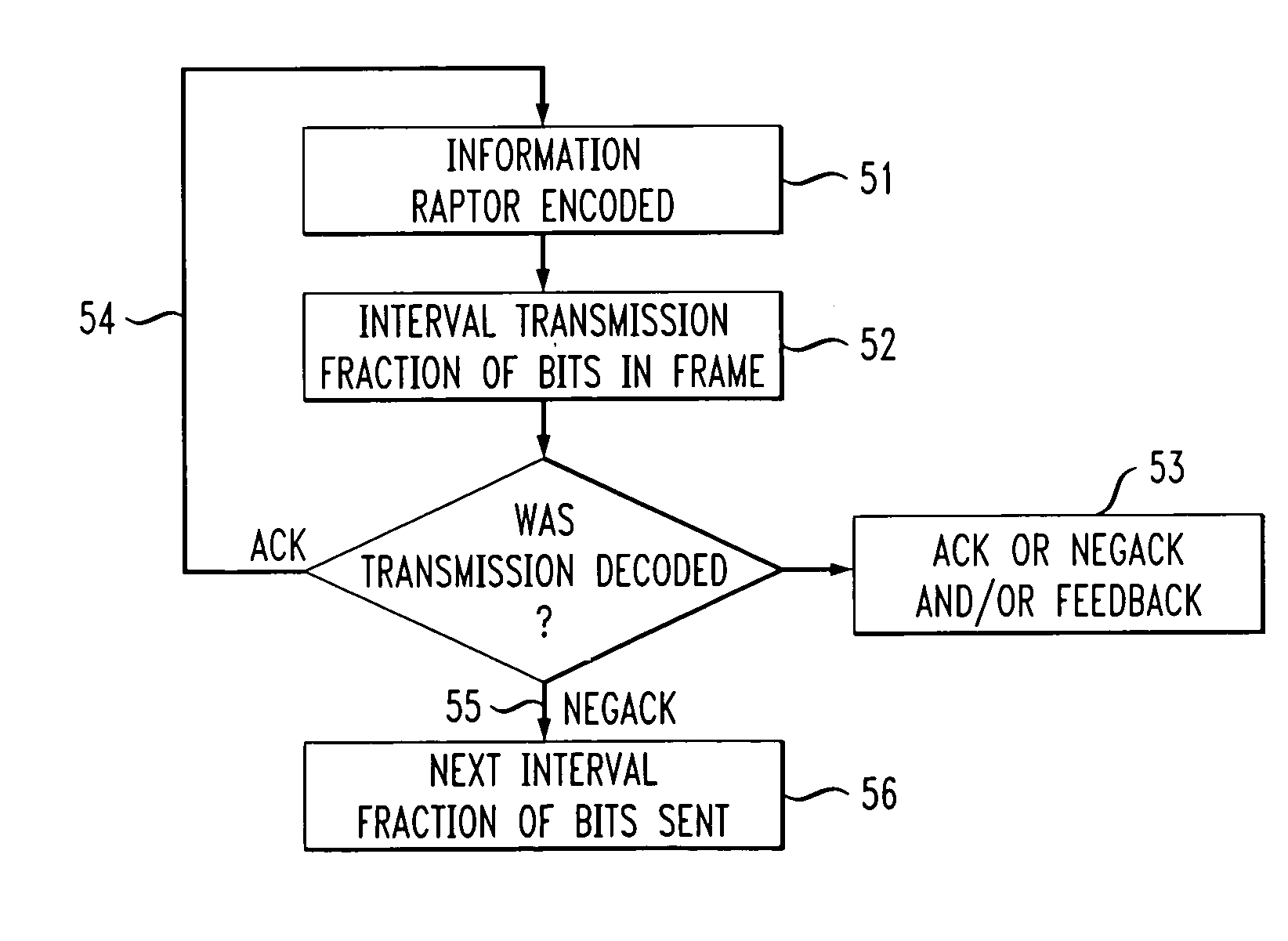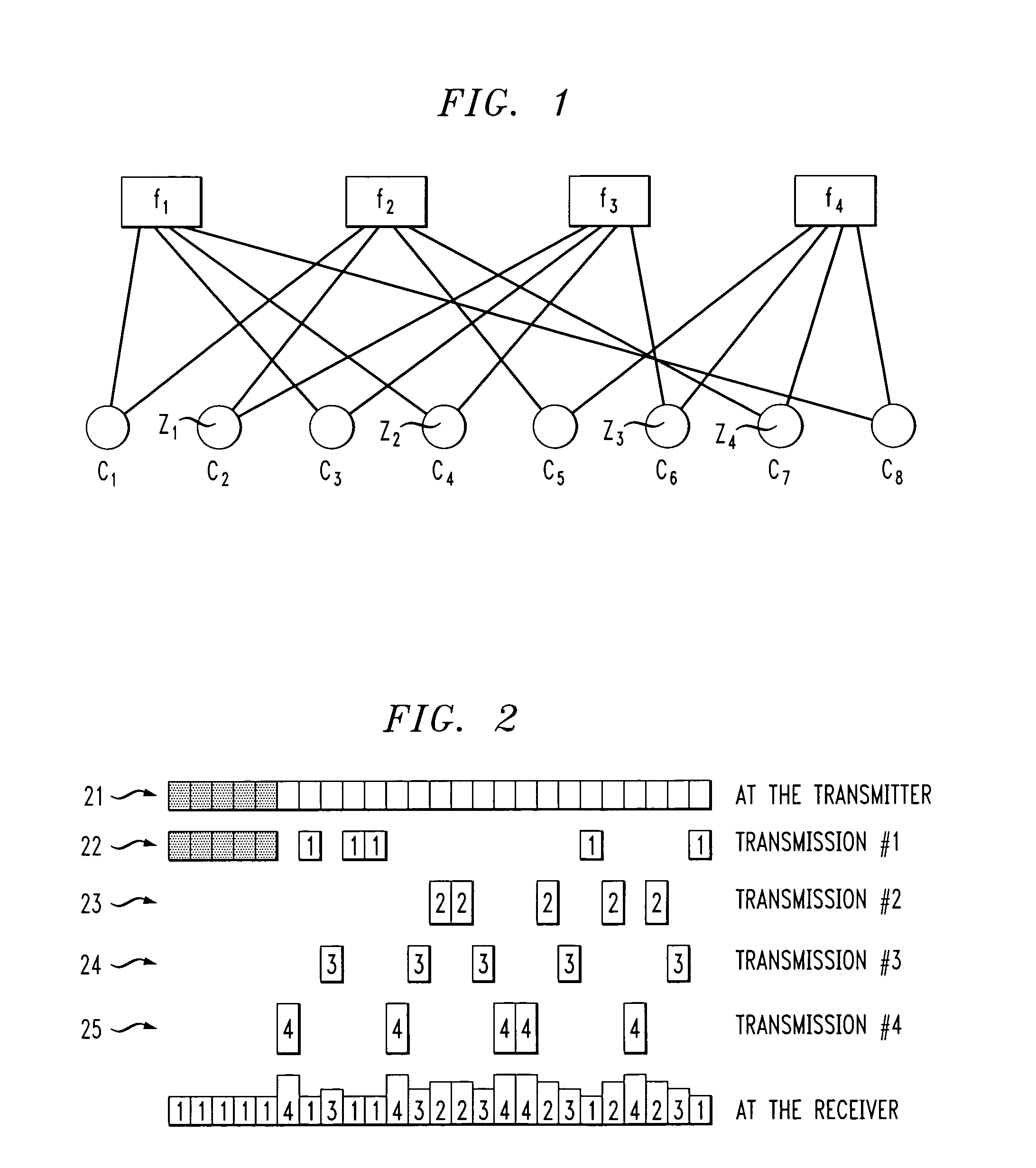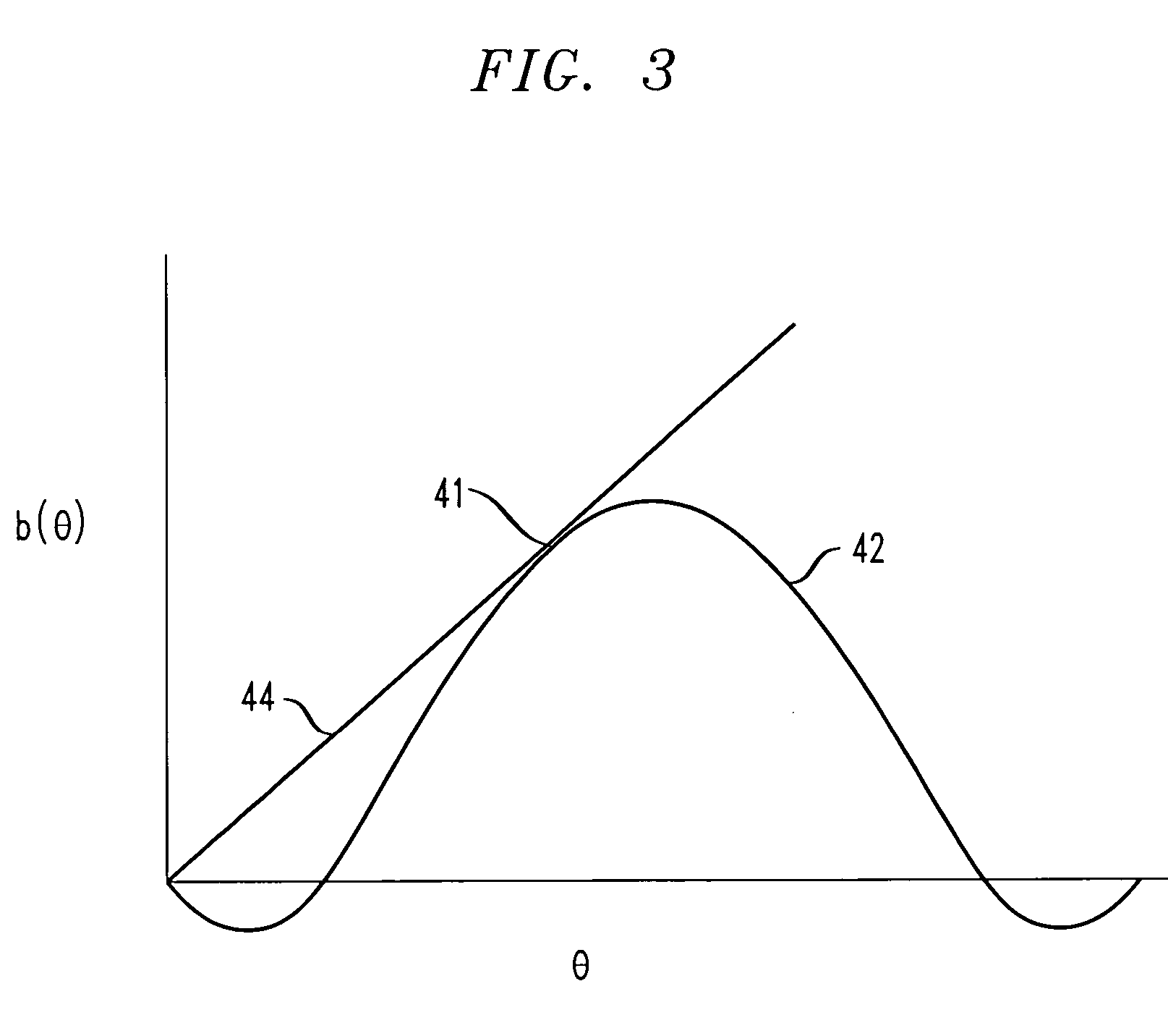Encoded transmission
a transmission and encoded technology, applied in the field of communication, can solve the problems of inability to decode encoded messages, inability to decode all ldpc codes equally well, and inability to decode correctly, so as to prevent punctured ldpc use, the effect of efficient operation at snr levels
- Summary
- Abstract
- Description
- Claims
- Application Information
AI Technical Summary
Benefits of technology
Problems solved by technology
Method used
Image
Examples
Embodiment Construction
[0028]The invention involves methods associated with punctured LDPC or Raptor code transmission. In punctured LDPC during a series of transmission intervals a portion of a codeword is sent. Thus, as shown in FIG. 4, information is encoded, 41, into a series of codewords. In a first interval, 42, a fraction of bits in the first codeword is transmitted. The receiver attempts to decode the codeword, 43, based on the first interval transmission. If decoding is successful, an ack message is sent and the procedure recycles, 44, to step 41 or, 42 for the first transmission interval on the next codeword. If decoding fails, a negack message is sent together with a feedback signal that is indicative of the transmission channel quality.
[0029]A measure of channel quality is a quantity that is relatable to the probability that a transmission is received and the received transmission decoded. Exemplary of a measure of channel quality is the signal-to-noise ratio measured at the receiver. Alternat...
PUM
 Login to View More
Login to View More Abstract
Description
Claims
Application Information
 Login to View More
Login to View More - R&D
- Intellectual Property
- Life Sciences
- Materials
- Tech Scout
- Unparalleled Data Quality
- Higher Quality Content
- 60% Fewer Hallucinations
Browse by: Latest US Patents, China's latest patents, Technical Efficacy Thesaurus, Application Domain, Technology Topic, Popular Technical Reports.
© 2025 PatSnap. All rights reserved.Legal|Privacy policy|Modern Slavery Act Transparency Statement|Sitemap|About US| Contact US: help@patsnap.com



